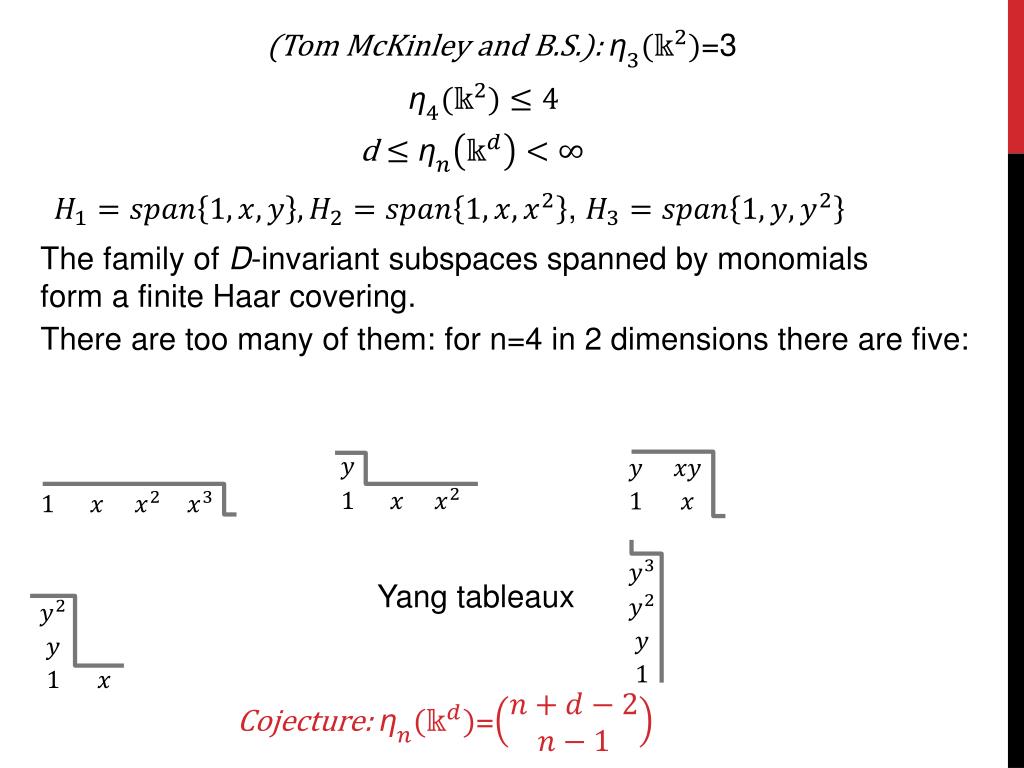

Picture: whether a subset of R 2 or R 3 is a subspace or not. Recipe: compute a spanning set for a null space. Learn to write a given subspace as a column space or null space. Learn the most important examples of subspaces. Before we present this result, we need some definitions and a basic result about compact convex sets.Īs in Chapters 13 and 14, all spaces considered in this chapter are complex spaces. Learn to determine whether or not a subset is a subspace. Now we return to the general case to prove Lomonosov's theorem, which claims considerably more than that every compact operator has a non-trivial invariant subspace. This deficiency was put right, with plenty to spare, in Chapter 14, but only for a compact normal operator on a Hilbert space. Our main aim in this chapter is to present the most beautiful of these positive results, Lomonosov's theorem, whose proof is surprisingly simple.Īs we remarked earlier, the Riesz theory of compact operators on Banach spaces culminated in a very pleasing theorem, Theorem 13.8, which nevertheless, did not even guarantee the existence of a single nontrivial invariant subspace. results claiming the existence of invariant subspaces for operators satisfying certain conditions. Much of the effort concerning the invariant-subspace problem has gone into proving positive results, i.e. Until fairly recently, it was not known whether there was any operator T without a non-trivial (closed) invariant subspace, and it is still not known whether there is such an operator on a (complex) Hilbert space. Given a complex Banach space X, which operators T ∈ B(X) have nontrivial closed invariant subspaces? This question, the so-called invariant subspace problem, is the topic of this brief last chapter. Basile, Giuseppe Marro, Giovanni (1992), Controlled and Conditioned Invariants in Linear System Theory, Englewood Cliffs : Prentice-Hall.(1985), "Controlled invariant and feedback controlled invariant subspaces in the design of a generalized dynamical system", Proceedings of the 24th IEEE Conference on Decision and Control, IEEE, pp. 872–873, doi: 10.1109/CDC.1985.268620, S2CID 9644586.

Basile, Giuseppe Marro, Giovanni (1969), "Controlled and conditioned invariant subspaces in linear system theory", Journal of Optimization Theory and Applications, 3 (5): 306–315, doi: 10.1007/BF00931370, S2CID 120847885.If V is a controlled invariant subspace, then there exists a matrix K such that the input u( t) = K x( t) keeps the state within V this is a simple feedback control ( Ghosh 1985, Thm 1.1). The matrices A and B have size n × n and n × p respectively.Ī subspace V ⊂ R n is a controlled invariant subspace if for any x(0) ∈ V, there is an input u( t) such that x( t) ∈ V for all nonnegative t.Ī subspace V ⊂ R n is a controlled invariant subspace if and only if AV ⊂ V + Im B. In mathematics, an amenable group is a locally compact topological group G carrying a kind of averaging operation on bounded functions that is invariant under translation by group elements. Here, x( t) ∈ R n denotes the state of the system and u( t) ∈ R p is the input. Given a linear operator T on a Banach space X, a closed subspace M of. This concept was introduced by Giuseppe Basile and Giovanni Marro ( Basile & Marro 1969).Ĭonsider a linear system described by the differential equation The notion of an invariant subspace is fundamental to the subject of operator theory. In control theory, a controlled invariant subspace of the state space representation of some system is a subspace such that, if the state of the system is initially in the subspace, it is possible to control the system so that the state is in the subspace at all times. Please introduce links to this page from related articles try the Find link tool for suggestions. This article is an orphan, as no other articles link to it.


 0 kommentar(er)
0 kommentar(er)
